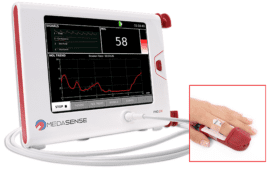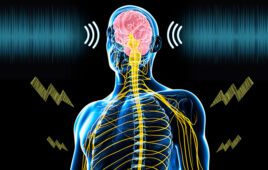Critically ill children in pediatric intensive care units once were often heavily sedated and discouraged from any activities, including walking, to facilitate speedy recovery. Though that approach has been turned on its head in recent years, efforts to get young patients up on their feet quickly have brought new challenges.
An undergraduate student design team from the Department of Biomedical Engineering at the Johns Hopkins University is developing a walker designed to overcome those challenges and get these young patients up and moving as quickly as possible.
“In the PICU, patients often have a lot of different pieces of equipment tethered to them,” says Nolan Benner, a senior studying biomedical engineering and the design team leader. This means that patients often need the assistance of up to five nurses and therapists to help drag large monitors and medical devices along, he says.
“We saw an opportunity to make that process a little easier for the nurses and patients involved,” Benner says.
The team’s solution: AmbuMate, a walker that makes it easier to transport multiple medical devices hooked to the patient, facilitating ambulation in the PICU. It has various conveniences to improve the experience of patients and caregivers, such as support for patient fatigue and wire/tube management to make the process less chaotic. The AmbuMate’s features will also reduce the set-up time needed for the ambulation compared to its adult ICU competitors.
“Historically, ICUs have prevented patients from moving to mitigate risks, but we now know that mobility can facilitate healing,” says Nicholas J. Durr, assistant professor of biomedical engineering and director of undergraduate design team courses.
Sapna Kudchadkar, an associate professor of anesthesiology and critical care medicine at the Johns Hopkins School of Medicine, as well as director of the Johns Hopkins PICU Clinical Research Program, approached the BME design team course instructors about the project.
Kudchadkar, an expert in pediatric intensive care who has worked to introduce sweeping changes to the way ill children are rehabilitated nationwide, presented a straightforward challenge: How can we help young patients get up and moving as soon as possible?
“We wanted a contraption where you could put all of the equipment in the same place and move everything as one unit,” Kudchadkar says.
The biomedical engineering students have been working on their prototype since September, tweaking the design and functionality. “If you look at our design, it’s modular,” says Shivani Pandey, a first-year design team member. “We’re trying to have large-scale prototypes, but at any point we’re also working on different parts of the design.”
The movement toward early mobility for PICU patients first originated at Johns Hopkins Hospital in 2013, when Kudchadkar and a team of nurses, therapists, and other stakeholders came together to create the PICU Up! protocol.
The protocol is built on the premise that regularly scheduled activity for hospitalized children helps them recover faster. Nurses and practitioners establish a daily routine that improves patients’ sleep hygiene. This means no naps during the day and never being woken up for bath time or X-rays during the night (as is otherwise usual). If the children are extremely sick, they are passively exercised, meaning someone else helps them move their muscles. As children get better, they are made to sit on the edge of their bed, stand, or sit in a chair close to the bed. Some even go so far as to be able to walk around the PICU with a breathing tube attached.
“We needed a multidisciplinary program to create a culture of mobility, to say it’s OK to keep kids more awake and to get them exercising earlier,” Kudchadkar says. “Then, they can come off the ventilator sooner, they can leave the ICU sooner and, hopefully, get back to the quality of life that they had before their illness.”
The Johns Hopkins student design team hopes to market its device to PICUs that are adopting Kudchadkar’s PICU Up!
“We’d love to take this to market, actually have our device being used in pediatric intensive care units and adult ICUs to help patients walk and feel better, improve patient outcomes and probably make life easier for nurses as well,” Benner said.
The team, which also includes Amna Ali, Talia Kirschbaum, Kriti Jindal, Elizabeth Morgan, Kavya Anjur and Shreya Narayan, will exhibit the AmbuMate at the university’s annual Whiting School of Engineering’s Design Day on May 8.
Feature Photo Credit: Members of the student design team demonstrate the problem with getting pediatric ICU patients up and walking as soon as possible: It’s cumbersome. They’ve developed an alternative they call AmbuMate. Pictured, left to right, are design team members Kriti Jindal), Shreya Narayan (standing in as a patient), and Nolan Benner




